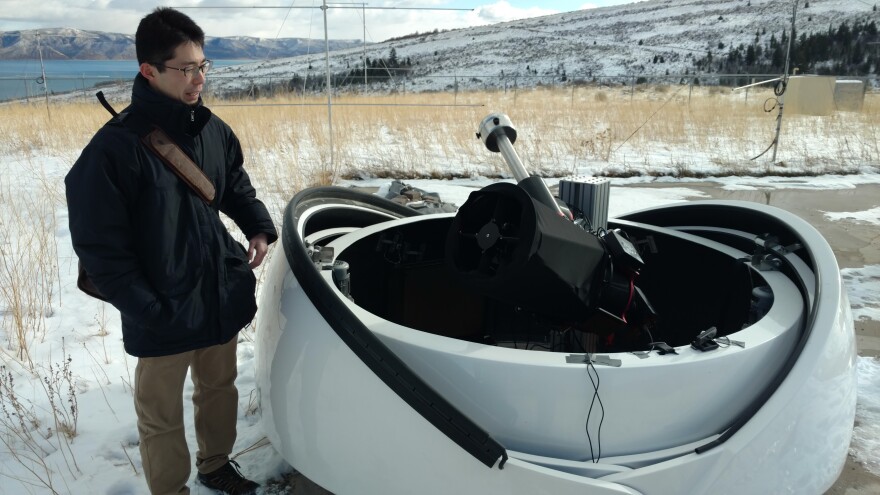In July of 2016, parts of a rocket body launched by the Chinese came down and entered Earth’s atmosphere above Utah and other western states.
It burned up and created a fire show seen by many across the state, either in person or on the news.
But after 60 years of us sending all sorts of things into space, not all of it has come down.
Abandoned launch vehicles, broken satellites, human waste left by astronauts, and other fragments and pieces of spacecraft are orbiting the Earth right now. It’s called space junk. Utah NASA Ambassador Patrick Wiggins likens it to litter in space.
“We litter the ground, and here’s another way that we do that," Wiggins says.
Space has about the litter equivalent of a park after a rock concert.
According to NASA, there are 22,000 pieces of softball-sized debris. There are about 700,000 marble sized pieces. And some of those pieces are traveling as fast as two to three miles per second in the lower orbits.
According to former USU Mechanical and Aerospace Engineering Professor Kohei Fujimoto, space junk can destroy satellites, make spacecraft useless, break off parts of other satellites and cause more junk.
It could also be dangerous for humans.
“For the astronauts in space, this is a life or death issue," Fujimoto says.
In the 2013 film "Gravity," George Clooney and Sandra Bullock play astronauts struggling to survive in space after a blizzard of orbiting debris destroys their space shuttle. Although the movie drew some criticism for it’s technical issues, the dangers are still very real.
“Hopefully we don’t have these events in the future," Fujimoto says. "God forbid they happen where we have a collision or explosion in space."
Fujimoto started a project at USU to monitor space junk using an optical telescope located in Bear Lake, Utah. The ultimate goal of the project is to avoid collisions.
“The first step in starting to rectify the problem is to know where are these objects. What are they doing. Where are going to be going in the future," Fujimoto says.
Bear Lake's high elevation, dark skies and generally clear air make it a perfect spot for a telescope to survey space. It’s the first west of the Mississippi dedicated to studying flying junk and Fujimoto hopes the university's data will go into a debris catalog to provide advance warning of collisions.
Fujimoto currently works on space-debris removal with Tokyo-based Astroscale.


